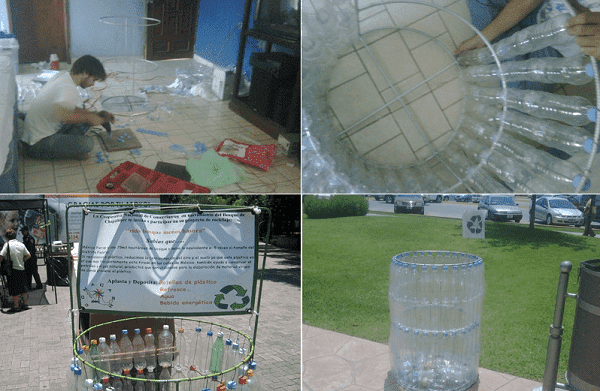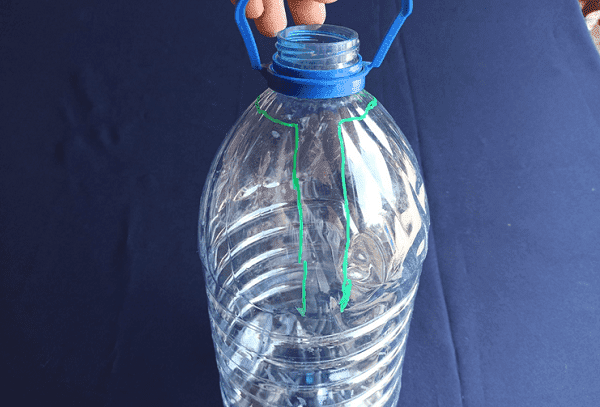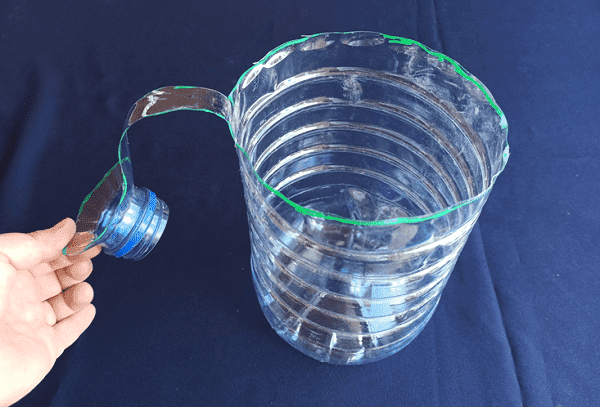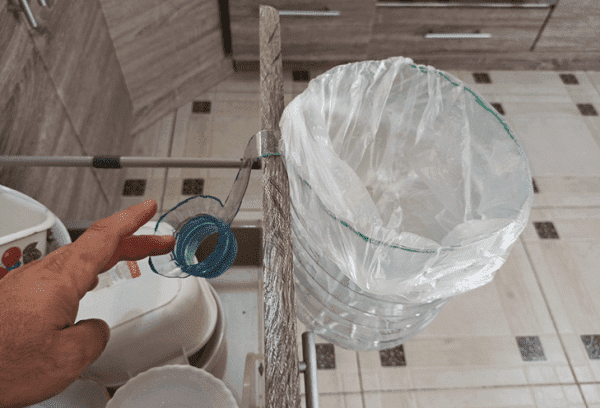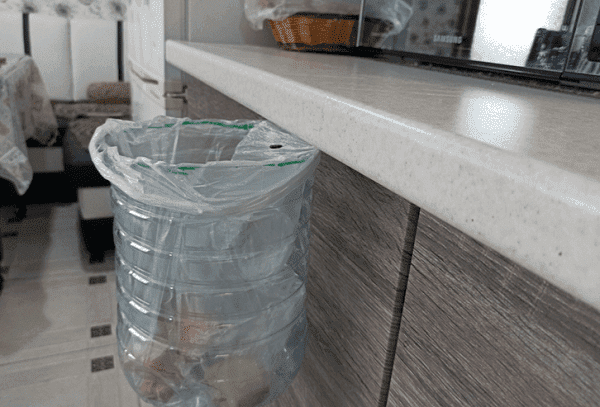A trash can made from plastic bottles is an indispensable thing in the countryside.
Waste disposal is a burning topic for summer residents. While organic matter can be buried and pieces of paper burned, the situation with plastic is more complicated. Alternatively, plastic bottles can be collected to later turn into a large recycling bin. Making a tank with your own hands is simple: the bottles are sewn together with knitting wire and then fixed to a metal frame. There are other manufacturing options.
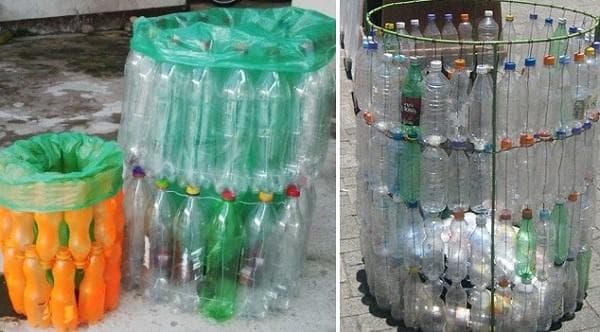
Garbage can on frame
The idea of a plastic bottle recycling bin is not new. Such tanks are made not only by Russian summer residents, but also by craftsmen abroad. And in some cities they stand right on the street:
It is convenient to collect plastic, grass and weeds in such tanks for green infusion. You can install a bin near the road where the garbage truck usually stops. Or put a thick film inside and use it as a water barrel. A tank for collecting large vegetables and fruits: potatoes, apples, pears and others is also suitable.
How to make it yourself step by step:
- First, a frame is made from reinforcement (large section wire, metal profile). The tank does not have to be round. It can be square, oval or even triangular. The frame consists of a base, middle and top of the same shape, as well as 2-4 side posts.
- The next stage is making the bottom. This item can be skipped if you plan to install garbage bags in the tank. The bottom is made of knitting wire, weaving a mesh.You can cut it from steel sheet, moisture-resistant plywood or polycarbonate.
- Preparing bottles. Next comes a line of plastic bottles. They are cleared of labels and holes are made in the center of the lid and bottom. You can use an awl or a hot nail. The diameter of the hole is equal to the cross-section of the binding wire.
- Knitting bottles. The knitting wire is cut into pieces equal to the height of the tank with a margin of 30 cm. The pieces are passed through the bottles. You can make the rows slimmer by making holes the size of a neck in the bottoms and inserting the containers into each other.
- Tank assembly. Stringed bottles are tied to the base and top of the tank. Then the rows are fixed along the middle line (braided with wire). Ready!
Advice. To make the trash can smooth and neat, it is advisable to use containers of the same volume and shape.
Frameless tank
Not everyone has extra fittings and tying wire. In this case, you can make a trash can without a frame:
- Using a furniture stapler. The bottles are cut in half lengthwise. Then the halves are connected to each other with a furniture stapler. It is better not to heavily load such a tank, but to dig it into the ground for stability.
- Using tape and screws. The bottles are laid out in a line close to each other and secured with a strip of tape. Then they are folded in a circle and wrapped with a second strip of tape. To increase the height, the bottle caps of the next row are attached to the caps of the previous row with self-tapping screws. Screw the bottles and re-wrap everything with tape.
Attention! The frameless plastic tank can be blown away by the wind. To prevent this from happening, you need to pour gravel or sand into the bottles.
Convenient waste collection bins
Large plastic eggplants can be easily converted into buckets using regular scissors.
- Draw the markings as shown in the photo:
- Cut it out.
Buckets can be hung on hooks or tree branches. They are also convenient to use in the kitchen at home.
Questions and answers
Question: How else to use plastic bottles in the country?
Answer: There are a lot of ideas: vertical gardens, a garden broom, a wind fence, a comfortable washable pouf, a washstand, a drip irrigation system and more.
Question: How to properly recycle plastic?
Answer: Ideally, plastic bottles should be cleared of labels, washed, crumpled, sorted by color and type of plastic, and the caps removed. In this form, the material can be handed over to the nearest collection point and receive a monetary reward (approximately 16 rubles per 1 kg).
Unsorted bottles are also subject to recycling - they are taken from special containers. In extreme cases, plastic can be burned (all except polyvinyl chloride, PVC, PVC). The latter releases hazardous substances when burned.
Plastic bottles are one of the main causes of environmental pollution. On average, one person consumes about 200 units of bottled drinks per year. However, their containers are rarely disposed of properly.
To stop the destruction of nature, in addition to proper waste separation, it is useful to reuse plastic. If you look at bottle crafts this way, the trash can idea doesn't seem so bad. It allows you to find a use for about 400 small bottles - the annual supply of the average family.
